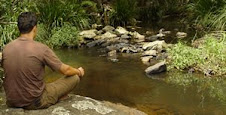
2 cups (400g) red lentils
1 litre (4 cups) water
2 cups (500ml) vegetable stock
2 tablespoons of vegetable oil or ghee
3 baby eggplants (500g), chopped coarsely
2 tablespoon of tomato paste
2 teaspoons of vegetable oil or ghee
1 medium brown onion (150g), chopped finely
1 clove garlic, crushed
1 teaspoon of mustard seeds
1 teaspoon cumin seeds
2 teaspoons ground cumin
1 teaspoon of chili flakes
2 large tomato’s (500g), chopped coarsely
• Rinse lentils in large colander under cold water until water runs clear.
• Add lentils to the water and stock bring to a boil in a large heavy based pot. Reduce heat, simmer, uncovered for about 40minutes or until dhal mixture thickens slightly, stirring occasionally.
• Heat two tablespoons of oil or ghee in a heavy-based saucepan; cook eggplant until lightly browned and soft.
• Add eggplant and tomato paste to dhal.
• Heat two teaspoons of oil or ghee in the saucepan and cook onion. Add garlic first, then mustard seeds, cumin seeds, ground cumin and chili flakes.
• Add tomato’s to saucepan and mix then add to dhal pot.
• Serve with fresh coriander and a dollop of natural yogurt.
• Optional: squeeze the juice of one fresh lemon over the dhal and stir before serving
Gayatri
Instructor
Australian School of Meditation and Yoga












